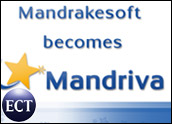
Because open-source software is written by individual developers or groups of developers on their own time and with their own resources, the quality of the product is an unknown.
To combat that problem, Carnegie Mellon West Center for Open Source Investigation; Intel; O’Reilly CodeZoo, a repository of open-source code; and SpikeSource, which certifies open-source software; are sponsoring a system called Business Readiness Rating (BRR). In keeping with the open-source philosophy, BRR is designed to allow the community itself to rate software products and make comments on those products. The rankings will then be made available to the public.
Differing Requirements
Stacey Quandt of Quandt Analytics said that software standards may be subjective. “The issue is not necessarily open source-quality, because the needs of users will vary depending on requirements. What is good enough for one user may not be good enough for someone else,” she told LinuxInsider. Quandt also pointed out that, like open source itself, BRR will depend entirely on the community to offer its opinions.
“The ratings system depends largely on the participation of open-source developers and such a participatory model faces challenges. The question is what is in this for open-source developers to participate?” she said. The goal of the ratings, according to the Open BRR Web site is to establish a “trusted, unbiased source for determining whether the open-source software they are considering is mature enough to adopt.”
What’s the Bottom Line?
But Quandt said that it will take more than that to entice people to participate. “Intel, Carnegie-Mellon and SpikeSource need to address how the ratings will lead to better open-source software and enhance the development process,” she said.
She also said that the rating system would fall short of giving businesses all they need to make informed decisions on the adoption of open-source programs.
“There are important aspects that the Business Rating system will not achieve, such as measuring the vibrancy of an ope- source community, the licensing of the open-source solution, the level of system vendor and independent software vendor support, and the maturity of the open-source solution compared with commercial alternatives. All of these factors should play a role in the decision criteria of most organizations considering the adoption of open-source software,” Quandt said.
The sponsors are looking for feedback from the open source community during the first phase of the project.




















































